Are you in a hurry or running late for a meeting but unfortunately, you got a flat tire all of a sudden? And you're wondering, how long does it take to repair a flat tire? We did some research for you, and this is what we discovered.
Typically, it takes 30 minutes to an hour to fix a tire depending on the extent of the damage. If the repair only needs the installation of plugs, it usually just takes 2 to 3 minutes, while a radial patch usually takes 20 to 30 minutes.
Keep scrolling as we dive into the causes of flat tires, how to repair a flat tire, and how long a patched tire usually lasts. We'll also cover the things you need to know before you get your damaged tire repaired. Moreover, we'll also discuss how to change tires in case you can't wait for the repair.
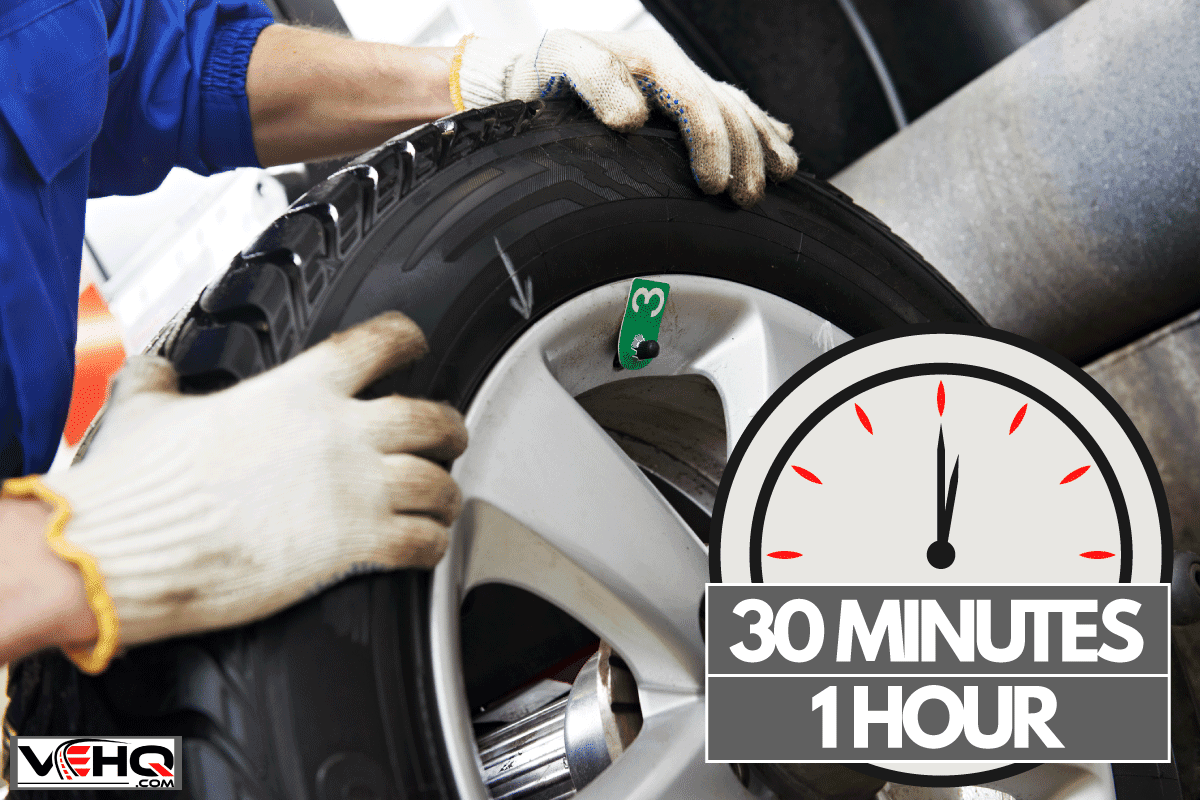
Types Of Tire Repair And How To Do Them
To repair a flat tire, there are three ways to do it:
- Patch
- Plug
- Repair Patch-Plug
Using a Patch
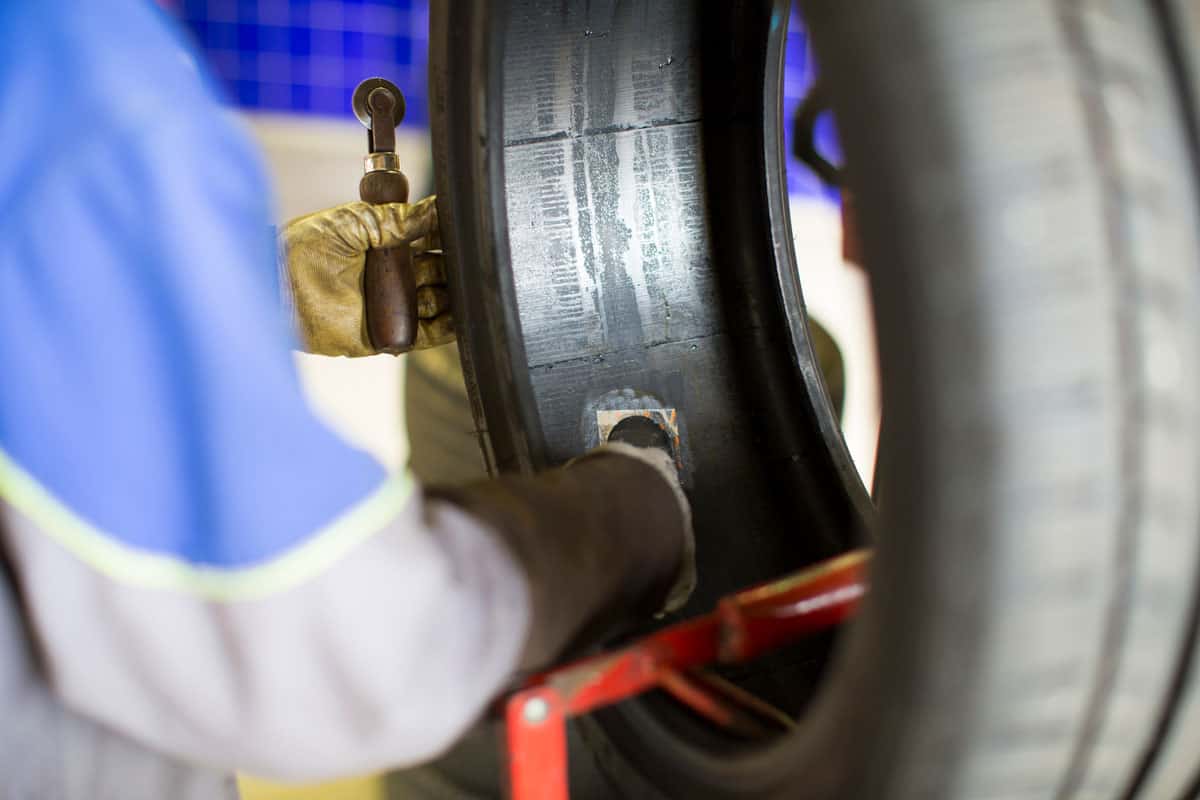
- To examine the damaged tire thoroughly, remove the tire entirely from its rim.
- After the incision has been determined, a full complement of specialized tools must be prepared for the shaving procedure.
- The puncture site must be meticulously polished, and a skilled technician should perform the job.
- Apply a cement patch to the incised area and the tire's inner lining. Ensure that the two surfaces are securely bonded together.
- Rolling stitches, overcoating with gray matter, or even employing heat can all help to strengthen the patch and mend the damaged rubber more effectively.
This procedure usually takes approximately 20-30 minutes and may take longer depending on the severity of the incision.
Using a Plug
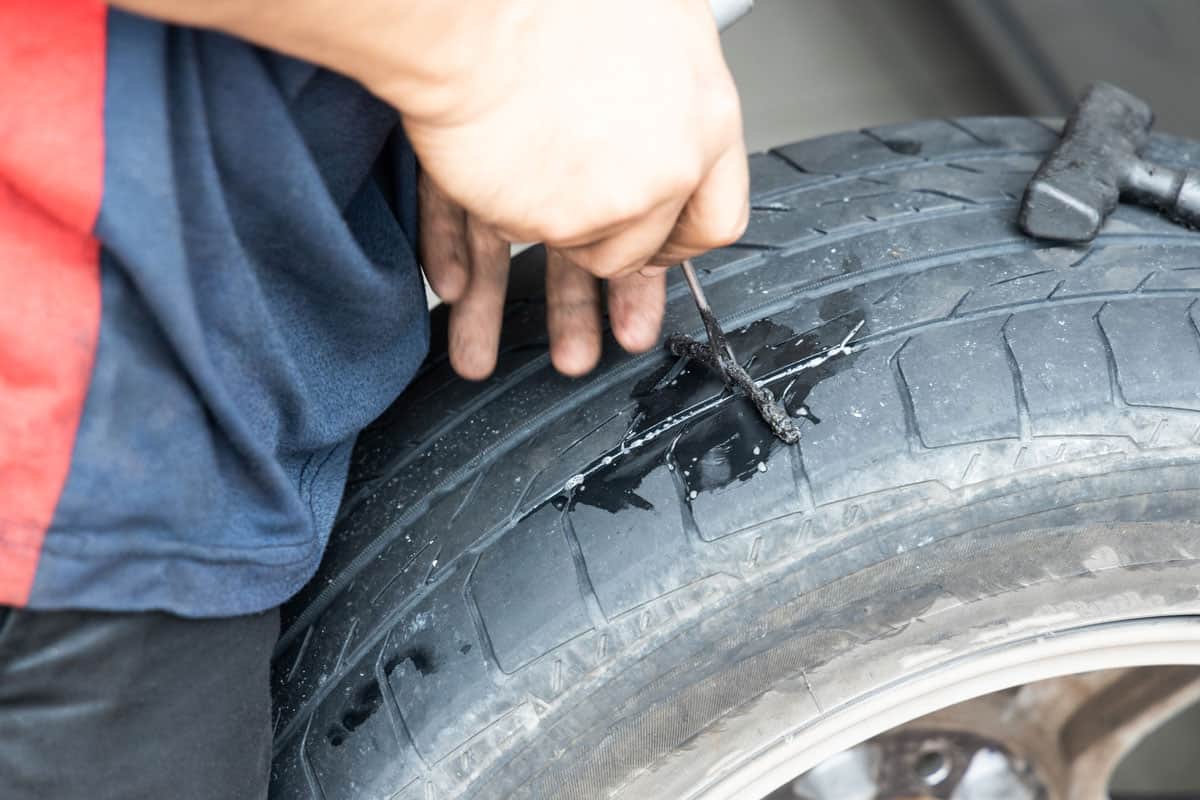
- Determine the location of the puncture.
- Remove the sharp object from the wheel's surface with pliers or the like, then wipe the wound to ensure cleanliness.
- Remove the malfunctioning air valve to deflate the wheel and make the plug wire easier to receive. Keep in mind that the air valve is rather delicate.
- Use the reamer to better handle the wound; this step is crucial and time-consuming since it determines whether or not the plug wire will fit the wound mouth.
- Prepare the installation tools and the plug wire. Using the pliers, feed the cord through. Apply a thin layer of liquid cement to the entire plug if it is available.
- Push the plug wire into the hole until it is two-thirds full of gas. Pull the pliers out by rotating them 90 degrees. If the rope is excessively long, cut it off and wait about five minutes for it to dry completely and entirely.
You must wait for five minutes or more to make sure that the plug is firmly secured at the mouth of the hole after the adhesives are dry. Ensure that water and moisture cannot penetrate into the tire so you will have peace of mind while driving.
Completing the repair may take less than 15 minutes. Additionally, a plugged-in tire can only travel for 25,000 miles, enough to let you drive further until you reach an automotive repair shop.
Using Patch-Plug Method
Combining patching and plug procedures improves the repair's success rate. To do this, you must follow these steps:
- For a quick repair, find a clean gray surface around the hole.
- Apply cementitious adhesive uniformly around the mended face.
- Estimate the size of the plug to suit the hole so that it prevents air leakage while also cushioning the wheel with the rubber pad.
A tire patch-plug is a lengthy procedure. The entire process will take roughly 30 minutes or longer to complete.
Things To Know Before Allowing Repair Of Your Tire
Remember, not all punctures or damage on your tires need to be repaired. Here are a few guidelines to know if you should go for a tire repair or not:
- Examine the puncture location; repairs should be limited to the tread area only. The tire should be replaced if a repair extends beyond the tread area on the side or along the edge. Make or permit no repairs.
- It is not safe to perform the repair if the damage caused by a tire puncture is larger than 1/4" in diameter.
- If the tire treads are less than 1/16", the tire is not suitable for usage on the road and should be replaced. Repairing a tire that should never have been on the road in the first place is pointless.
- Ensure that the technician who is replacing your damaged tire removes the tire from the rim so that the damaged region may be thoroughly examined. Damage to the inner liner that is not visible from the outside may have occurred.
- Replace the tire if a fresh puncture appears in the same location as a previous repair. Do not have it fixed.
Common Causes Of Flat Tires
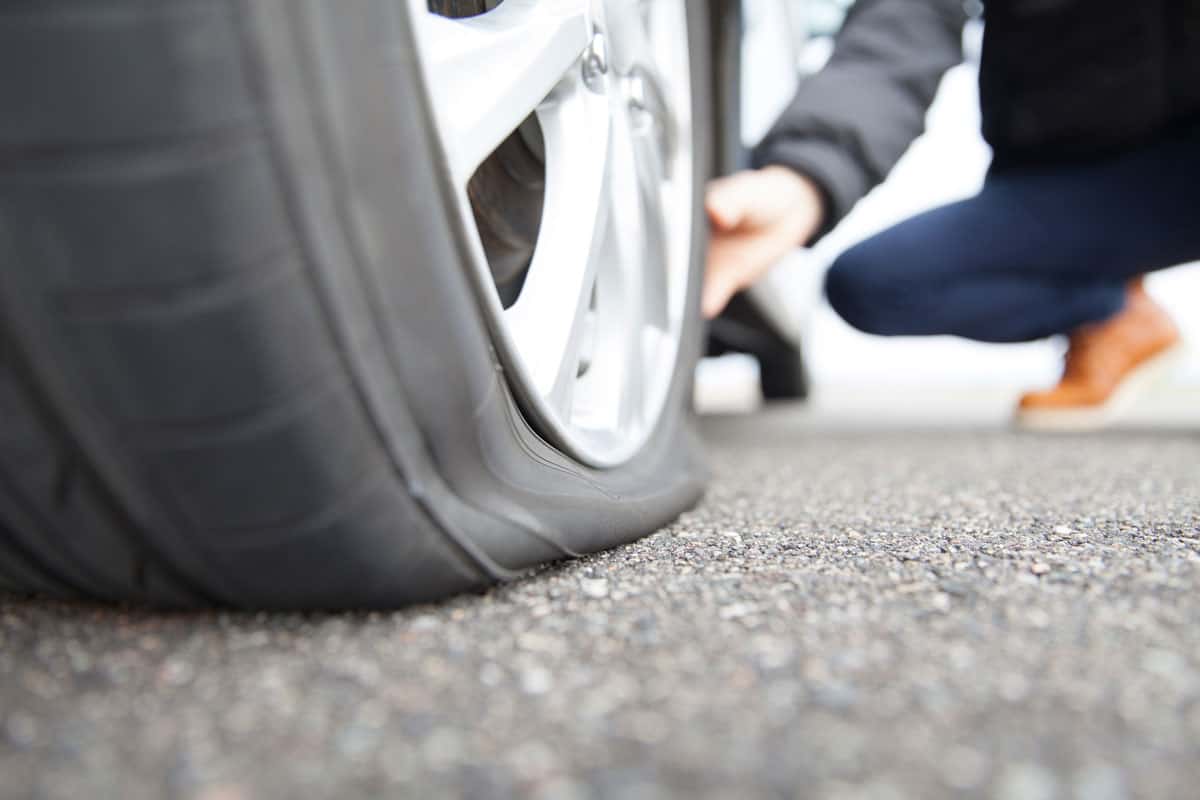
If you're wondering what caused your flat tire, here are the possible reasons:
A Sharp Object Has Cut Your Tire
A cut or infiltration of a sharp item, such as a nail or shattered glass, is the most typical cause of a damaged tire. Your tire will leak air over time due to the implanted sharp object, resulting in a flat tire.
Leakage From the Valve Stem and Tire Bead
Valve stem leaking is a common cause of tire problems. The valve stem is the part of the tire that you unscrew when you need to inflate it. Any damage or simply dirt on this small piece could cause air to leak out of the tire until it is completely level, similar to valve stem leaking.
Road Conditions are Poor
Potholes, uneven roadways, and stray debris can cause damage to your car's wheels, axles, and undercarriage. The worse the state of the road, the more likely it is that a tire may be destroyed.
Over-Inflated Tires
An over-inflated tire can put too much pressure on the tire, resulting in a rapid blowout. To avoid a blowout, it is critical to record the maximum air inflation limit of your tires as a preventative step. You can find these details in the owner's manual for your car.
Extremely High Temperatures
During the hottest months of the year, your tire is most likely to fall flat. High temperatures cause the air in your tire to expand, increasing the inner weight of the tire. When this happens, your tire's chances of losing pressure and, even worse, becoming flat increase.
How Much Pressure Should Your Tires Have?
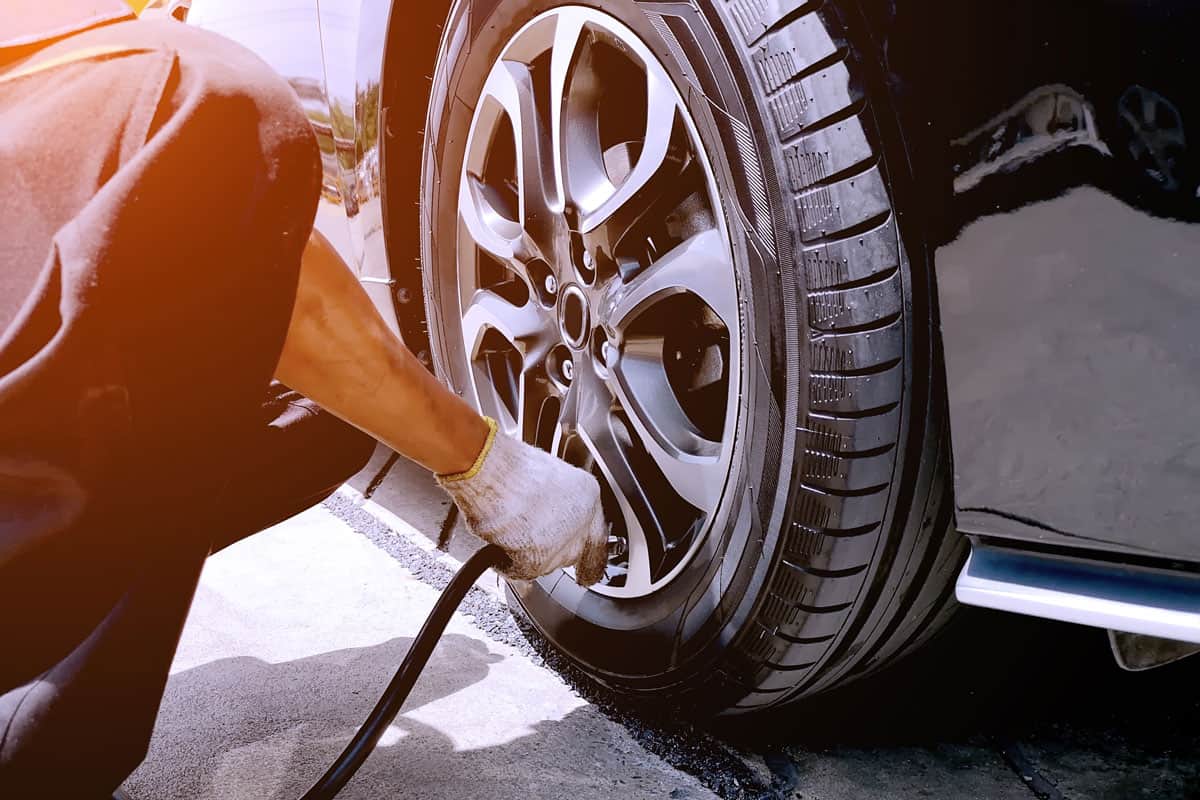
When the tires are cold, most passenger cars recommend a pressure of 32 to 35 psi. When tires are cold, contact between them and the road generates heat, which raises both the temperature and the air pressure.
The appropriate tire pressure is usually printed on a sticker inside the driver's door on newer cars. If there isn't a sticker on the door, the specs are normally found in the owner's manual.
However, remember to not pump your tires to the recommended pressure on the tire. This is the maximum pressure the tire can withstand, not the vehicle's recommended pressure.
How To Change Tires
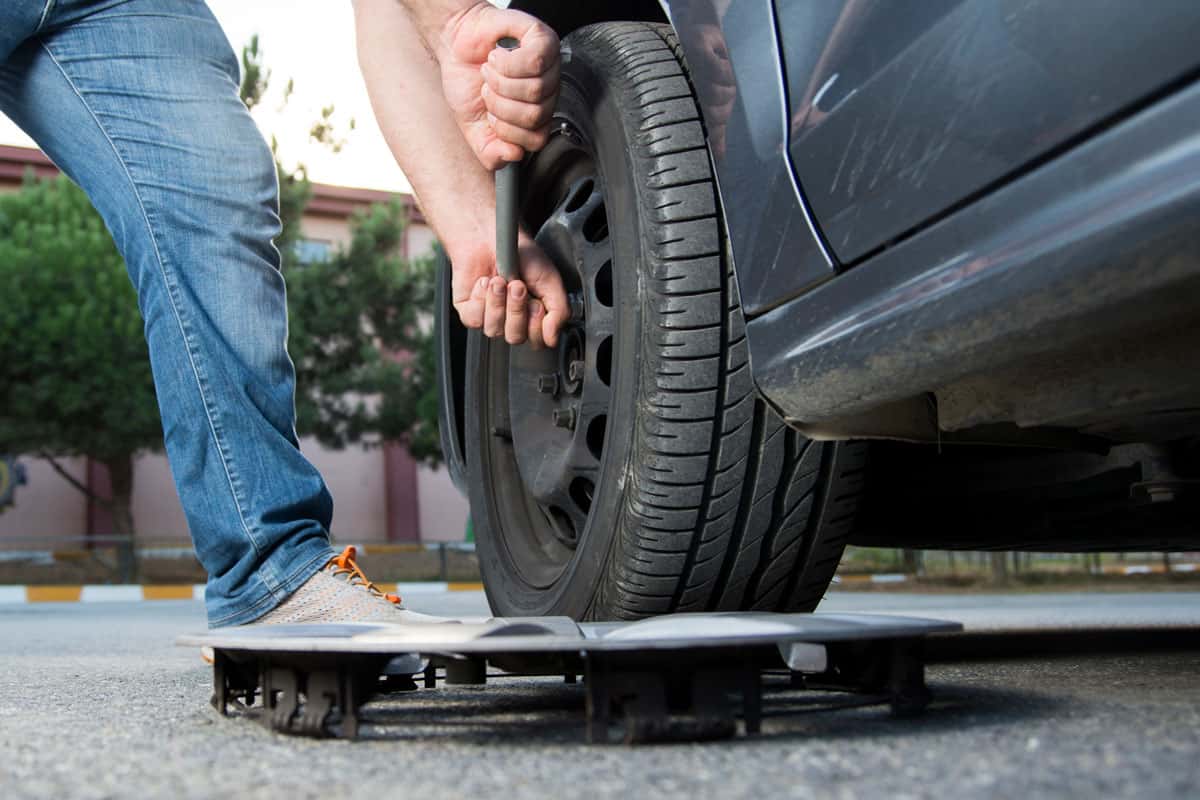
If you don't have much time and you need to immediately drive to your next destination, then your only option is to change tires.
The time it takes you to replace a tire is determined by your level of skill, the tools you have accessible, and the location where you are parking. Non-professionals, on the other hand, need 15 to 20 minutes to replace one tire.
To change tires, you need to do:
- Look for a place to park your vehicle.
- To avoid rolling and promote stability, place a bracing object behind and in front of a tire that will not be lifted by the jack.
- Locate and get your jack and spare tire.
- Place the jack in position.
- Jack up the car without completely raising the vehicle.
- Remove any center covers to have access to the lug nuts.
- Loosen the lug nuts by turning them counterclockwise.
- Jack up the car enough to allow you to easily remove the tire.
- Place the spare tire and tighten the lug nuts properly, this time turn it clockwise.
- After a few kilometers, it's a good idea to pull over and check that the lug nuts are still snug.
In Closing
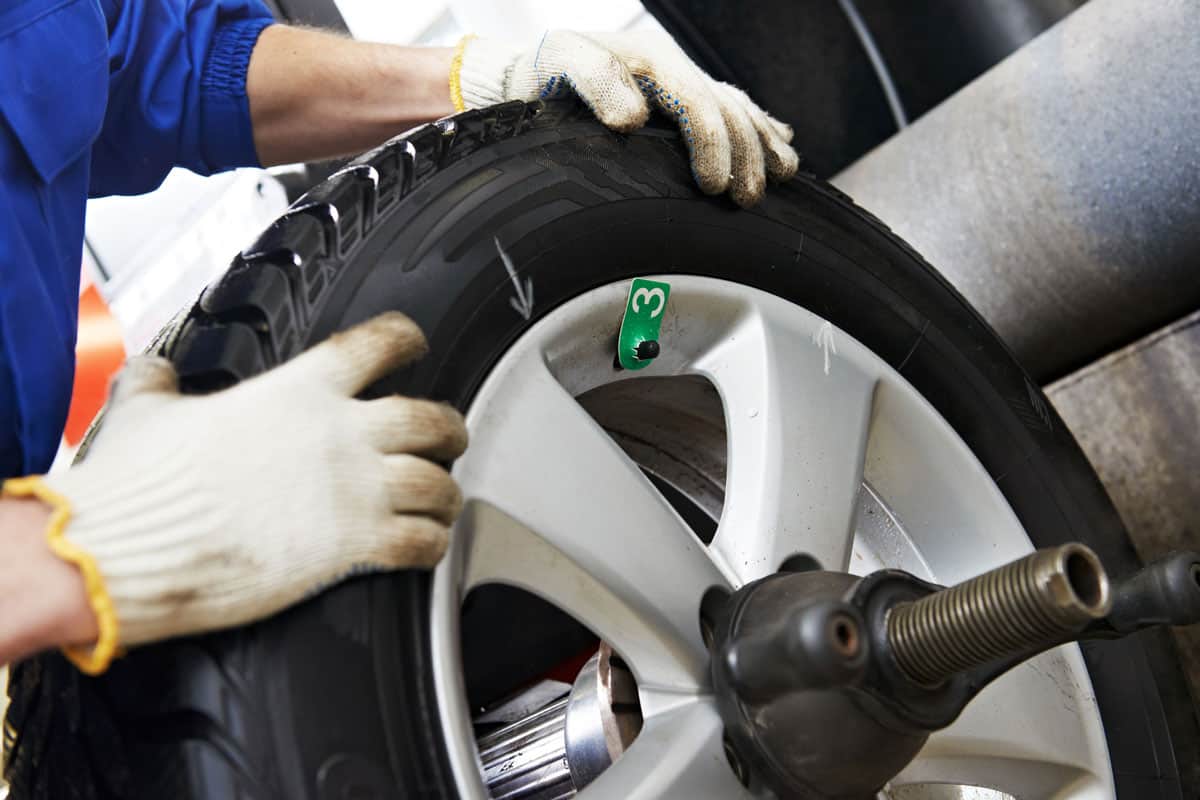
To reiterate, tire repair generally takes up to 30-60 minutes, depending on the intensity of the damage and the repair method used. Although it is still best to let professionals repair the damaged tire if you have time to spare.
If you're wondering why your tires wear fast even though your car's new, you can read this article: Why Do New Car Tires Wear Out So Fast?
Before you go, check these related articles to know what tires best fit if you have a Mazda 3 or Hyundai Ioniq:
